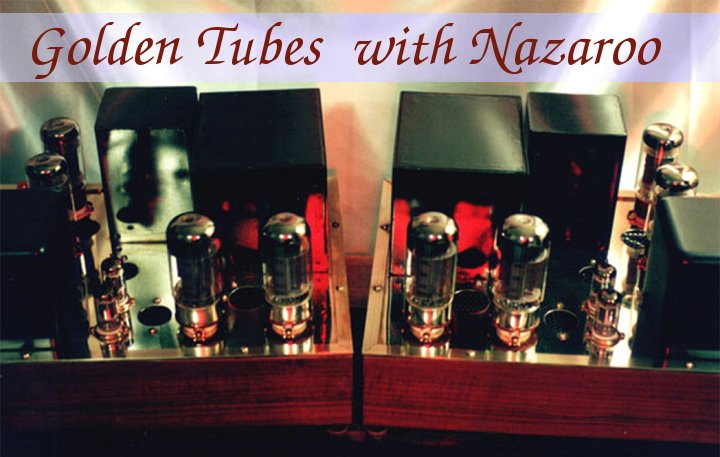Lets look at a basic 2-stage RIAA preamp from the early 50s.
As expected, the RIAA EQ will be inserted after the first stage, where headroom can be found and behavior controlled.
There are actually two parts to the circuit in regards to phono cartridges.
(1) The Input Impedance of the Unit. (R in). This will be set to 16K for ceramic cartridges, and otherwise, for magnetic cartridges, it should match that specified by the maker of the cartridge. Thus you could have a couple of resistors here to switch in and out depending upon the cartridge you were using, or a Ceramic/Magnetic setting.
(2) The RIAA Network Proper. This is a 3-terminal (in/out/ground) interchangeable or adjustable network, activated by selection switches. Note the pre-specified .0068 uF input cap, and the 1 Meg output load to the next stage. These are chosen as a base for the variations to follow.
Circuit Operation:
The 6SL7 is chosen for its high Mu (gain). With all high Mu triodes, care should be taken to prevent HF rolloff from Miller capacitance. Here with a gain of 30 and a MC in the order of 100 uuFd, the output Z of the source shouldn't be higher than 75K to keep the 3db point above 20kHz. Luckily both ceramics and magnetics generally have Out Z lower than this.
We now design the Out Z of the RIAA circuit etc. to keep the signal to stage 2 low in size (and distortion). The EQ circuit will have an Amplification factor of .022 at 1kHz, even at 20 Hz the Amplificatoin (after losses) will be only about .33. This means you can have a bias as low as -2 volts on the 2nd stage, and a typical input signal of .1 volt to the first stage.
1K R Cathode resistors will typically be bypassed with a 47 uF cap to keep up the gain and most importantly to reduce heater hum. To keep the signal clean, this (electrolytic) can itself be bypassed with a small polypropolene for signal clarity, slew-rate and reduced noise.
In these low-signal circuits you need a really good, well filtered Power Supply. In my view this makes the Mu-Follower the ideal method for supplying the HV.
Design of the RIAA Circuit (EQ):
(1) First, the input Z which the first stage sees must be high enough not to load the tube too much, (which would cause distortion).
(2) Second, the Out Z presented to the 2nd stage should be low enough not to lose high end through Miller Capacitance.
(3) Finally, if you have more than one RIAA circuit, they should be matched in overall attenuation losses so you can switch easily between settings without volume problems.
Flat Turnover EQ:
A basic L-circuit does the trick for flat recordings with a fixed turn-over point (i.e., where the gain is about 0 db).
(A) 250 Hz Flat Xover: For British H.M.V. and other European pressings (Mittell, B.E.B., etc)
(B) 500 Hz Flat Xover: Older American Vintage pressings.
(C) 1 kHz Flat Xover: Some rare European recordings.



No comments:
Post a Comment